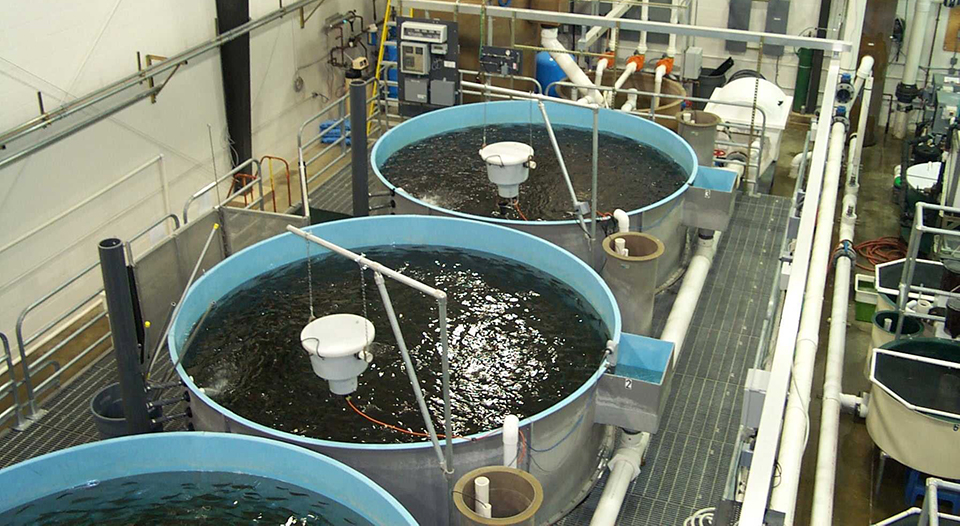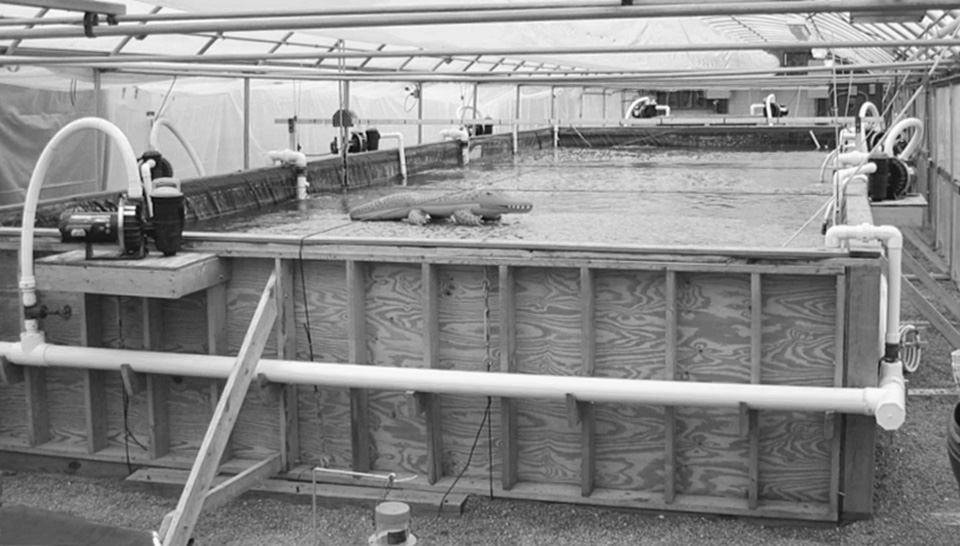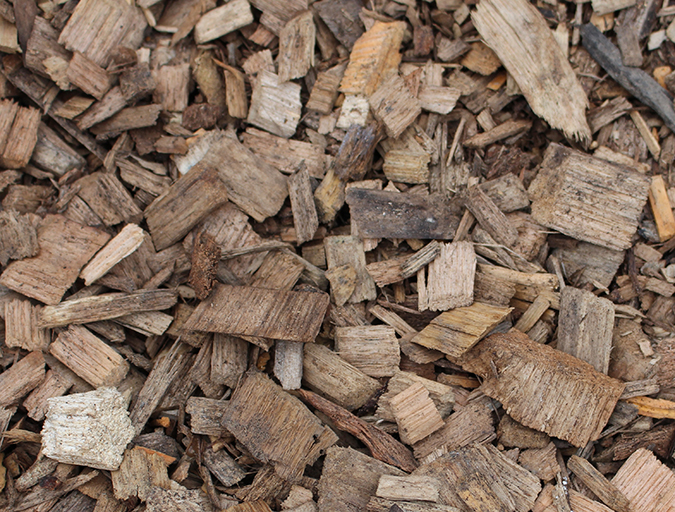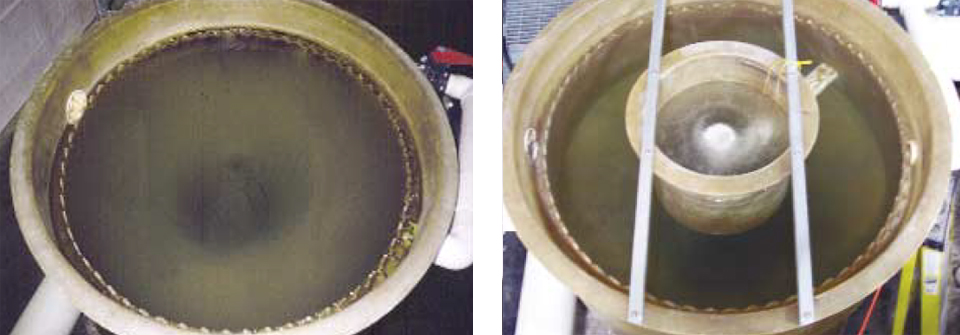Emphasize good husbandry strategies like quarantine, optimum nutrition and stress reduction stress

Construction of an intensive aquaculture production facility without serious attention to biosecurity nearly guarantees outbreaks of infectious disease. Without biosecurity, the economic impacts can be both insidious and overt, and in the end will likely be catastrophic.
Producers can respond by continually taking losses with the hope they never happen again. However, this strategy results in added costs that can include not only direct losses from mortality and inability to replace stock, but facility closure or restriction of movement orders, as well. Additional costs are incurred in the form of diversion of management and labor from other essential tasks and underutilization of production facilities.
Proactive biosecurity
Proactive producers assume that disease will be a problem and establish an effective biosecurity program. Biosecurity consists of practices and procedures that reduce the risk that pathogens will be introduced to a facility, spread, and increase susceptibility to infection and disease. Biosecurity accomplishes pathogen reduction rather than pathogen elimination. Although it is not possible to completely eliminate all pathogens from a culture facility, a consistently implemented biosecurity plan will make it easier to isolate the source of animal health problems.
Plan during design
Biosecurity is an important part of a facility’s daily operating procedures. Planning should start during the design phase, and protocols should be established before the facility comes on line. Thinking about biosecurity before production begins allows nonintrusive routines to be developed, rather than adding stopgap methods after problems arise.
Effective biosecurity need not be an additional layer of work. Procedures can be incorporated by modification of procedures already in use. But when protocols are implemented in an existing operation, they may be perceived as inconvenient, and can introduce an additional layer of complexity to an already inefficient operation.
Cleaning required
Animal husbandry in biosecure recirculating aquaculture systems requires the systems to be designed so they can be cleaned easily, frequently, and completely. Any surface can serve as a substrate for microorganisms.
All components of a recycle system – including biofilters, low-head oxygenators, carbon dioxide strippers, pipes and tanks – should be constructed of nonporous materials and arranged to be easily accessible for cleaning and disinfection. Because wood can not be easily and thoroughly disinfected, it should be considered only for fabrication of temporary structures. Clean-outs should be installed to allow access to any part of the system for flushing accumulated biosolids.
Water supply and animals
Two important routes of pathogen introduction are the water supply and the animals. Water supplies known to be pathogen-free should obviously be used. If unavailable, then another site should be chosen, or ozone or ultraviolet water disinfection should be implemented.
Only specific-pathogen-free (SPF) animals should be introduced to the system. Producers who transport animals directly from ponds into a recirculating system without screening will quite likely experience losses from infectious diseases. Ideally, animals are brought in at the egg stage or as young as possible. All new animals should be quarantined, and especially those that are not SPF.
Animal feed
Pathogens can also be introduced to a recirculated system along with the animal feed. Introduction of pathogens through live food presents a serious risk of contamination. All live food should be cultured in SPF conditions and should never be used directly from natural aquatic environments.
Commercial dry feeds are usually processed at high temperatures above 70 degrees C, so pathogen introduction these feeds is less likely than from other sources. However, as each bag or lot of feed is used, the lot number, date manufactured, and date used should be recorded in case feed use must be traced.
Quarantine
Quarantine, the isolation of newly arrived animals, is critically important to prevent the spread of contagious diseases to other animals in aquaculture systems. The quarantine facility should be designed for easy cleaning and disinfection. It should be a separate room or facility, not just a tank in the corner of the production area. Waste discharge should be separate from the overall system and, if necessary, disinfected with ozone or ultraviolet radiation.
Access to the quarantine facility should be restricted to a minimum number of people. Work should be scheduled so that employees do not pass directly from quarantine to production areas. If they must, personnel must be completely clean before entering into production areas.
Meticulous husbandry
Meticulous husbandry is a cornerstone of practices to prevent the spread of pathogens throughout a facility. Dead and dying animals should be removed frequently, or at least daily. Protocols that address cleanliness of equipment, employees and visitors should be established.
Decomposing debris provides a substrate for opportunistic pathogens to flourish. Therefore, tanks should be kept free of uneaten feed, feces, algae, and aquatic plants. Sumps, inflow and outflow pipes, aerators, spray bars, and any other equipment inside the tanks should be cleaned frequently.
Quality animals, quality care
Optimum nutrition, reduction of animal stress, control of the quality of animal stock, and vaccination are all strategies to reduce the susceptibility of animals to infection and disease. Poorly nourished animals are more susceptible to disease and stress associated with handling. Inappropriate system design and poor water quality make animals more susceptible to, and aggravate the consequences of, infection with opportunistic and obligate pathogens. Starting with good-quality animal stock and protecting animals with vaccination will help take full advantage of the benefits of the best nutrition and a low-stress environment.
Monitoring and response
Effective biosecurity programs include accurate record-keeping, and vigilant monitoring and response. By the time the major signs of poor animal health are noticed, mortality has often begun and problems are more difficult to solve. Monitoring, which should be considered early in facility design, is an important part of the early identification, isolation, and treatment of such problems.
Observation should be carried out daily, and routine monitoring of water quality is imperative. In the case of fish, condition and behavior can be observed through tank windows located where weak, sick fish normally congregate (i.e., at the inflow or quiet areas of the tank). Culled moribund animals should be periodically assayed for pathogens. Records on growth and feed conversion should be used to detect problems that affect performance but haven’t resulted in mortality.
Conclusion
Serious attention should be paid to biosecurity measures during the planning of an intensive aquaculture production facility, to prevent outbreaks of infectious diseases and minimize their economic impact. Routes of potential pathogen introduction should be understood, and good husbandry strategies – including quarantine, optimum nutrition, reduction of animal stress, monitoring and quality control – should be emphasized.
Note: This article was adapted from the author’s contribution to Recirculating Aquaculture Systems, a Cayuga AquaVentures book by M. B. Timmons, J. M. Ebeling, F. W. Wheaton, S. T. Summerfelt, and B. J. Vinci on practical aquacultural engineering.
(Editor’s Note: This article was originally published in the June 2002 print edition of the Global Aquaculture Advocate.)
Now that you've reached the end of the article ...
… please consider supporting GSA’s mission to advance responsible seafood practices through education, advocacy and third-party assurances. The Advocate aims to document the evolution of responsible seafood practices and share the expansive knowledge of our vast network of contributors.
By becoming a Global Seafood Alliance member, you’re ensuring that all of the pre-competitive work we do through member benefits, resources and events can continue. Individual membership costs just $50 a year.
Not a GSA member? Join us.
Author
-
Julie Bebak-Williams, VMD, Ph.D.
Freshwater Institute
P.O. Box 1889
Shepherdstown, WV 25443 USA
Tagged With
Related Posts

Innovation & Investment
Matorka aims to unearth innovation with Arctic charr
A new and ambitious Iceland company is about to construct what it claims will be the world’s largest land-based salmonid farm. What sets Matorka’s Arctic char farm apart is its ability to tap into natural resources unique to the island nation.

Innovation & Investment
Mixed-cell raceways offer best of two water worlds
One solution to the problems with raceways is to convert them into a series of counter-rotating mixed cells that act as hydraulically separated round tanks.

Responsibility
Woodchip bioreactors effectively treat aquaculture effluent
Woodchip bioreactors can efficiently remove nitrate, phosphorus and total suspended solids from aquaculture wastewaters. Denitrification treatment of the relatively organic-rich aquaculture wastewater is a new and useful application to protect against water pollution.

Responsibility
Settler evaluation: Radial flow vs tangential flow
In a study, a radial-flow settler provided approximately twice the TSS removal efficiency of a comparable swirl separator.


